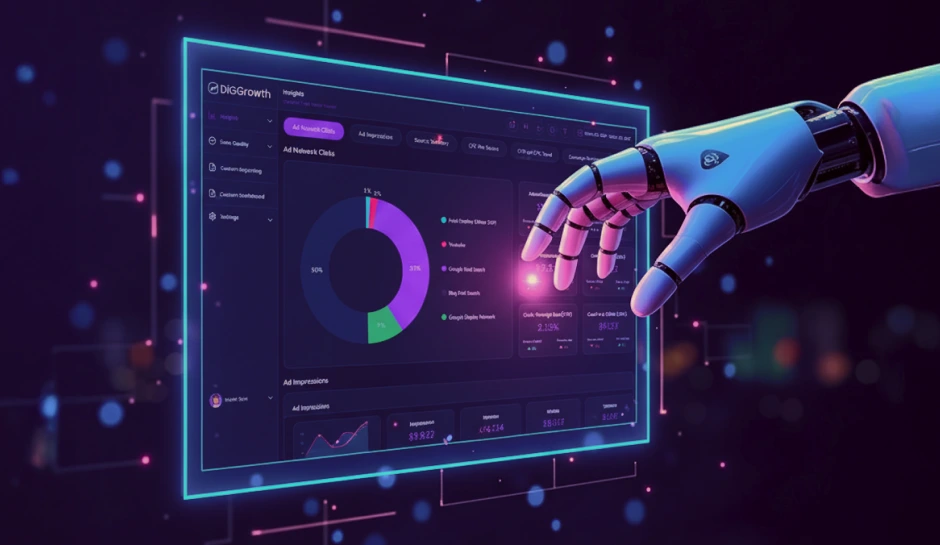
Leveraging Customer Data Enrichment for Smarter Business Decisions
Customer data enrichment transforms incomplete profiles into rich, actionable insights. This guide explores how enriched data improves targeting, personalization, and decision-making across marketing and sales. Learn key strategies, tools, and measurable ROI outcomes.
Data enrichment refers to the process of enhancing raw customer data by appending or refining it with additional context from external or internal sources. In a marketplace where strategic decisions rely heavily on precision, organizations that enrich their customer data gain a measurable edge. Enhanced datasets support deeper customer insight, streamlined operations, and sharper sales strategies by filling gaps, correcting inaccuracies, and uncovering behavioral patterns hidden within existing records.
What impact does refined data have on day-to-day operations? Armed with enriched profiles, marketing teams personalize campaigns with pinpoint accuracy, sales reps identify cross-sell opportunities faster, and support teams resolve queries with contextual precision. Throughout this piece, we’ll examine the step-by-step procedures of customer data enrichment, explore its operational and commercial benefits, review the latest enabling technologies, and outline actionable best practices for implementation.
What Exactly Is Customer Data Enrichment?
Defining the Process
Customer data enrichment refers to the systematic process of enhancing existing customer records with external or supplementary information. Rather than relying solely on limited first-party data collected through touchpoints like checkout forms or newsletter sign-ups, enrichment integrates additional attributes to make each record completer and more actionable.
When executed consistently, this process injects depth and nuance into datasets that were previously skeletal. A record that once contained little more than a name and email address can, after enrichment, include job title, industry, company size, social media presence, income bracket, buying intent signals, and more. This heightened visibility sharpens segmentation, drives personalization, and feeds smarter campaign decisions.
First-Party vs. Third-Party Data
First-party data comes directly from customer interactions with a brand, such as website analytics, CRM entries, email engagement, or mobile app usage. Businesses control this data and often collect it through explicit user consent.
Third-party data, on the other hand, is gathered by external providers and aggregated from multiple channels outside direct customer interaction. Vendors pull from public records, social networks, commercial datasets, and digital behavior sources. Although not collected from firsthand engagement, its scale and variety make it invaluable for enrichment, especially when combined with internal data assets.
The Customer Data Enrichment Process: From Raw Input to Actionable Insight
| Step | Stage | Description |
|---|---|---|
| 1 | Data Collection |
Raw data is gathered from various digital touchpoints like CRM systems, websites, mobile apps, email marketing platforms, social media, live chat, and support logs. Each interaction helps define a customer’s behavior, preferences, demographics, and buying patterns. Example: A user subscribes to a newsletter (contact info), clicks a product link (behavioral data), or mentions a brand on Twitter (social signal). These data points are isolated until structured for analysis. |
| 2 | Data Integration |
Fragmented data across departments and platforms is unified using APIs, ETL pipelines, or native sync tools. This removes silos and enables real-time updates to a single, centralized customer profile. Tools: Segment, Zapier, Talend. Benefit: Marketing, sales, and support can access consistent, shared customer data. |
| 3 | Data Cleaning and Normalization |
Ensures accuracy and consistency across the dataset by removing errors and formatting discrepancies. Processes:
Tools: Informatica, Melissa. |
| 4 | Data Enrichment |
Adds external data points to expand the customer profile, including firmographics, technographics, social data, and intent signals. Sources: Clearbit, FullContact, ZoomInfo, Bombora. Value: Enables deeper personalization and more strategic outreach for B2B/B2C contexts. |
| 5 | Validation & Continuous Updating |
Customer data is kept current through ongoing updates and revalidation. Job changes, mergers, and other shifts degrade data quickly without automation. Solutions: Scheduled enrichment API refreshes, real-time customer input, and data orchestration via CDPs. Tools: Tealium, mParticle. Importance: Prevents decay in data quality, ensuring relevance in segmentation and targeting. |
Mastering the Core Elements of Customer Data Enrichment
Data Quality Improvement
Flawed or fragmented customer data produces misdirected campaigns and poor decision-making. Enhancing data quality directly sharpens targeting accuracy, strengthens segmentation tiers, and fosters more effective customer journeys. The Experian Global Data Management Report found that 92% of organizations suspect their CRM contains old, incorrect, or incomplete data.
Data enrichment actively corrects errors, removes redundancies, and supplements missing or outdated entries. By validating email domains, appending updated phone numbers, or standardizing geographic information, enriched profiles become reliable assets rather than liabilities. This reduces bounce rates, prevents duplicate records, and supports predictive analytics built around dependable input data.
Data Integration
Customer information is stored in dozens of separate locations, including CRM systems, billing platforms, email campaign tools, website analytics, service logs, and ERP software. Each dataset tells part of the customer’s story. Enrichment merges these threads into a full narrative.
Centralizing information across platforms reveals behavioral patterns and lifecycle stages. When Salesforce data integrates with external behavioral feeds or internal ticketing tools, such as
First-Party vs. Third-Party Data
First-party data comes directly from customer interactions with a brand, such as website analytics, CRM entries, email engagement, or mobile app usage. Businesses control this data and often collect it through explicit user consent.
Third-party data, on the other hand, is gathered by external providers and aggregated from multiple channels outside direct customer interaction. Vendors pull from public records, social networks, commercial datasets, and digital behavior sources. Although not collected from firsthand engagement, its scale and variety make it invaluable for enrichment, especially when combined with internal data assets.
The Customer Data Enrichment Process: From Raw Input to Actionable Insight
| Step | Stage | Description |
|---|---|---|
| 1 | Data Collection |
Raw data is gathered from various digital touchpoints like CRM systems, websites, mobile apps, email marketing platforms, social media, live chat, and support logs. Each interaction helps define a customer’s behavior, preferences, demographics, and buying patterns. Example: A user subscribes to a newsletter (contact info), clicks a product link (behavioral data), or mentions a brand on Twitter (social signal). These data points are isolated until structured for analysis. |
| 2 | Data Integration |
Fragmented data across departments and platforms is unified using APIs, ETL pipelines, or native sync tools. This removes silos and enables real-time updates to a single, centralized customer profile. Tools: Segment, Zapier, Talend. Benefit: Marketing, sales, and support can access consistent, shared customer data. |
| 3 | Data Cleaning and Normalization |
Ensures accuracy and consistency across the dataset by removing errors and formatting discrepancies. Processes:
Tools: Informatica, Melissa. |
| 4 | Data Enrichment |
Adds external data points to expand the customer profile, including firmographics, technographics, social data, and intent signals. Sources: Clearbit, FullContact, ZoomInfo, Bombora. Value: Enables deeper personalization and more strategic outreach for B2B/B2C contexts. |
| 5 | Validation & Continuous Updating |
Customer data is kept current through ongoing updates and revalidation. Job changes, mergers, and other shifts degrade data quickly without automation. Solutions: Scheduled enrichment API refreshes, real-time customer input, and data orchestration via CDPs. Tools: Tealium, mParticle. Importance: Prevents decay in data quality, ensuring relevance in segmentation and targeting. |
Mastering the Core Elements of Customer Data Enrichment
Data Quality Improvement
Flawed or fragmented customer data produces misdirected campaigns and poor decision-making. Enhancing data quality directly sharpens targeting accuracy, strengthens segmentation tiers, and fosters more effective customer journeys. The Experian Global Data Management Report found that 92% of organizations suspect their CRM contains old, incorrect, or incomplete data.
Data enrichment actively corrects errors, removes redundancies, and supplements missing or outdated entries. By validating email domains, appending updated phone numbers, or standardizing geographic information, enriched profiles become reliable assets rather than liabilities. This reduces bounce rates, prevents duplicate records, and supports predictive analytics built around dependable input data.
Data Integration
Customer information is stored in dozens of separate locations, including CRM systems, billing platforms, email campaign tools, website analytics, service logs, and ERP software. Each dataset tells part of the customer’s story. Enrichment merges these threads into a full narrative.
Centralizing information across platforms reveals behavioral patterns and lifecycle stages. When Salesforce data integrates with external behavioral feeds or internal ticketing tools, such as Zendesk, marketing and sales teams gain a cleaner, wider-angle view. This process builds the foundation for a true Customer 360 View, enabling coordinated outreach and adaptive service across channels.
Real-Time Data Enrichment
Batch enrichment offers value, but it doesn’t match the responsiveness of real-time updates. By connecting APIs to customer portals, checkout flows, or form submissions, businesses can incorporate fresh third-party context on the fly. Platforms like Clearbit or FullContact enable dynamic profile expansion as soon as a user enters minimal information.
Real-time enrichment powers immediate personalization. For instance, with just an email address, marketers can retrieve company size, industry, and job role in seconds, then tailor product recommendations or sales outreach accordingly. This responsiveness drives higher conversion rates across digital touchpoints.
Third-Party Data Sources
Internal data tells only part of the story. Supplemental context, such as firmographics, technographics, social signals, and purchase intent indicators, comes from third-party sources. These providers gather and verify billions of data points across web activity, business registries, and public datasets.
Reliable enrichment vendors include names like Dun & Bradstreet, ZoomInfo, and Bombora, among others. Choosing a provider hinges on criteria like data freshness, update frequency, compliance protocols, and integration compatibility. A good match expands the precision of targeting efforts while maintaining regulatory confidence.
Pro Tip- To maximize the impact of customer data enrichment, integrate your enrichment provider’s API directly into your lead capture forms or CRM. This enables real-time data augmentation at the point of entry, reducing manual workload and ensuring your team always works with the most accurate and comprehensive customer profiles.
From Data to Insight: How Enrichment Fuels Business Intelligence
Turning Raw Profiles into Predictive Power
Enriched customer data transforms static records into actionable intelligence. With third-party attributes, like firmographics, behavioral signals, and property data, businesses shift from reactive reporting to forward-looking strategies. A customer profile that once listed only an email address now includes industry size, job title, intent data, and even technology usage. This reshaped profile feeds directly into predictive analytics engines.
Using enriched datasets, machine learning models deliver accurate forecasts on:
- Propensity to purchase: Algorithms identify leads most likely to convert based on enriched behavioral and demographic profiles.
- Customer churn risk: Attrition signals, like decreased engagement or revenue slowdown, are easier to detect when combined with real-time enrichment updates.
- Upsell potential: Revenue tiers, company growth indicators, or technological stack help estimate capacity for expansion
Predictive insight takes shape only when data enrichment provides the depth and context algorithms require. Without relevant augmentation, predictive tools underperform, tied down by surface-level input.
Precision in Targeting Through Granular Segmentation
Robust customer segmentation becomes possible when enrichment incorporates multidimensional data points. Businesses can cluster accounts or individuals not only by firmographic data like industry, revenue brackets, or staff size, but also by nuanced attributes such as:
- Property ownership data for real estate and mortgage firms
- Legal status and incorporation details for B2B finance
- Digital behavior patterns like content engagement or app usage
With enriched records, segments get tighter, smarter, and more profitable. For example, instead of targeting broad eCommerce categories, a brand can narrow outreach to DTC apparel companies valued at over $2 million, using Shopify and headquartered on the West Coast. This level of segmentation eliminates waste and raises campaign ROI.
Personalization: Fueling Relevance with Contextual Data
When data contains more than a name and email, personalization stops being a gimmick. Enriched customer records allow marketers to tailor email content, product offers, and ad creatives based on:
- Device and technology data: Trigger device-specific messages
- Professional roles: Target messages by seniority or function
- Geographic and time zone data: Optimize send times and location-specific content
Email click-through rates, for instance, increase 14% on average when messaging reflects a recipient’s industry and role, as reported by Campaign Monitor. Enriched data turns guesswork into precision, each message landing with intent, not estimation.
Insight-Driven Decisions That Grow Lifetime Value
Customer lifetime value (CLTV) doesn’t increase by chance. It grows when businesses understand who their best customers are, what offers drive retention, and when engagement levels drop. Enrichment fills in the missing context required for these decisions. Combined with attribution modeling, it shows which acquisition channels yield high-value customers, not just clicks.
Finance teams use enriched data to refine LTV: CAC ratios. Product teams identify which features matter most to high-value segments. Customer success teams prioritize accounts with a high lifetime value score. All that starts with a richer, more complete understanding, made possible only through data enrichment.
Pro Tip- Combine enriched customer profiles with cohort analysis to uncover retention patterns and lifecycle triggers. By grouping customers based on shared attributes, such as acquisition source, product usage, or enriched firmographic traits, you can identify what drives long-term value and which interventions most effectively reduce churn.
CRM Optimization Through Data Enrichment
How Enriched Data Enhances CRM System Effectiveness
Customer Relationship Management (CRM) systems thrive on data accuracy. Enriched customer data eliminates gaps, reduces duplicate records, and provides up-to-date contextual intelligence. This enables CRMs to shift from passive repositories into active decision-making engines. By integrating third-party data sources, such as firmographics, technographics, and buying signals, companies create a multidimensional view of each customer.
Strong profile completeness leads to fewer missed opportunities. Inside the CRM, sales reps see not just contact names and titles, but operational budgets, technology stacks, and recent funding rounds. Automated lead scoring algorithms improve immediately after ingesting enriched attributes, surfacing priority accounts rapidly.
Use Cases:Dynamic Segmentation, Personalization, and Lifecycle Marketing
Dynamic segmentation: Traditional static list segmentation underperforms in fast-moving sectors. With real-time enrichment, the CRM segments customers dynamically based on behavioral intent, job title changes, or location updates. This realigns sales territories and marketing audiences instantly.
Personalized contact cadences: Automated outreach engines use enriched fields, such as seniority level or company headcount, to vary message frequency and value propositions. Outreach sequences for a VP of IT at a mid-sized SaaS firm differ dramatically from those for a Head of Procurement at a Fortune 500 enterprise.
Lifecycle marketing optimization: CRMs integrated with enrichment tools track stage-specific attributes. When a lead upgrades to customer status, triggers real-time updates, such as employee growth or new hiring trends, marketers inject more relevant cross-sell or upsell campaigns aligned to customer expansion.
Syncing Enriched Data to Sales and Marketing Platforms
A CRM does not operate in isolation. Enriched customer data, once processed, must flow seamlessly into connected systems to drive coordinated action. Synchronization to platforms like HubSpot, Marketo, Salesforce, or Outreach ensures marketing campaigns and sales workflows remain tightly aligned.
Teams eliminate latency between insight and execution. For instance, identifying a funding event via enrichment triggers an intent-scored campaign in Marketo within minutes. Simultaneously, sales receive an alert in Salesforce with relevant talking points and adjusted BANT scores.
Instead of sporadic data pulls or manual updates, companies employing API-level integrations with enrichment providers maintain a continuously updated CRM ecosystem, driving higher conversion rates and shorter sales cycles across the organization.
Pro Tip- Set up automated enrichment triggers within your CRM to update high-priority fields on a rolling basis, especially for leads in active sales cycles or key accounts. This ensures that your sales and marketing teams always act on the freshest data without manual intervention, boosting personalization, timing, and overall conversion effectiveness.
Measuring the ROI of Customer Data Enrichment
| Category | Metric | Impact of Enriched Data | Reported Improvement |
|---|---|---|---|
| Marketing Performance | Email Open Rates | Personalization through accurate job titles, names, and segments increases relevance | Up to 14.3% increase (Mailchimp benchmark) |
| Marketing Performance | Click-Through Rates (CTR) | Dynamic CTAs driven by personalized data boost engagement | 10–20% lift across A/B tests (Retail & SaaS) |
| Marketing Performance | Email Deliverability – Bounce Rates | Validation removes invalid/outdated emails before send | Up to 30% reduction (Experian study) |
| Marketing Performance | Email Deliverability – Unsubscribe/Undelivered Messages | Enhanced targeting reduces irrelevant messaging | Up to 17% reduction in unsubscribes |
| Sales Outcomes | Sales Conversion Rate | Micro-targeting via firmographic/technographic data improves deal success | 25–35% lift (ZoomInfo & Clearbit data) |
| Sales Outcomes | Sales Cycle Length | Behavioral and intent signals pre-qualify leads faster | 20–30% reduction in cycle time (Gartner) |
| Testing & Validation | A/B Testing (vs. control group) | Measure open, CTR, conversion, and engagement | Enriched cohorts consistently outperform over 4-week intervals |
Transforming Business Performance with Smarter Customer Data
Customer data enrichment turns raw records into powerful assets that drive revenue, improve service, and sharpen decision-making. Every stage covered, from understanding what enrichment is to examining its measurable ROI, demonstrates a direct line between better data and better business outcomes.
Start with fragmented customer profiles and incomplete interactions, then layer in firmographics, behavioral signals, and other third-party insights. The result is more than a cleaner database, a high-resolution view of your market that enables targeted campaigns, predictive modeling, and personalized experiences at scale.
Across marketing, sales, and service functions, enriched data sharpens every customer touchpoint. CRM systems evolve from passive repositories into engines of growth. Enrichment doesn’t just patch gaps; it produces meaningful context, delivering clarity where there was opacity and potential where there was friction.
Key Takeaways
- By appending first-party records with firmographics, behavioral insights, and third-party signals, businesses transform skeletal profiles into high-resolution customer views. This enables smarter segmentation, targeting, and campaign planning.
- APIs and real-time data flows allow marketing and sales teams to act on fresh insights instantly tailoring outreach based on company size, job role, or intent signals the moment a lead engages.
- Enriched data directly improves KPIs like open rates (+14.3%), CTRs (+20%), conversion rates (+35%), and sales cycle speed (-30%). A/B testing proves enriched cohorts consistently outperform controls, validating investment returns.
- From identifying high-LTV customers to surfacing churn risks or upsell potential, enriched data fuels analytics and automation. Integrated into CRM and martech stacks, it elevates decision-making across the customer journey.
Audit your current data flows. Where are the blind spots in your customer records?
Look for misaligned inputs, missing identifiers, and outdated fields with DiGGrowth. Get in touch with our experts for enhanced customer data enrichment. Drop us a line at info@diggrowth.com to get started.
Ready to get started?
Increase your marketing ROI by 30% with custom dashboards & reports that present a clear picture of marketing effectiveness
Start Free Trial
Experience Premium Marketing Analytics At Budget-Friendly Pricing.

Learn how you can accurately measure return on marketing investment.
Additional Resources
How Predictive AI Will Transform Paid Media Strategy in 2026
Paid media isn’t a channel game anymore, it’s...
Read full post postDon’t Let AI Break Your Brand: What Every CMO Should Know
AI isn’t just another marketing tool. It’s changing...
Read full post postFrom Demos to Deployment: Why MCP Is the Foundation of Agentic AI
A quiet revolution is unfolding in AI. And...
Read full post postFAQ's
Customer data enrichment is the process of enhancing existing customer profiles by adding missing or supplementary information sourced from both internal systems and external providers. Rather than relying solely on basic first-party data such as names and email addresses, enrichment fills in key gaps with attributes like job title, company size, online behavior, or purchase intent.
A wide range of data points can be enriched to create more complete and useful customer profiles. These include contact information, such as verified email addresses; demographic details, including age and education level; behavioral data, including website interactions and purchase history; and firmographic information, including company revenue and employee count. This data can be sourced from internal systems, such as CRM platforms, email marketing tools, and analytics dashboards.
Data enrichment enhances marketing and sales performance by enabling teams to make more informed and targeted decisions. For marketing teams, enriched data enables highly personalized campaigns that speak directly to a recipient's industry, job role, or behavioral preferences, significantly boosting engagement rates. Sales teams benefit from better-qualified leads that come with rich context, such as a prospect’s company size, budget range, or technology stack, making it easier to tailor outreach and close deals faster.
Customer data should be regularly enriched and updated to maintain accuracy and relevance. Real-time enrichment is ideal for capturing fresh context at critical touchpoints, such as during form submissions or when a lead is entered into a CRM system. However, even in cases where real-time integration isn’t feasible, businesses should perform scheduled enrichment, such as weekly or monthly batch updates, to ensure their data remains current.
Businesses can measure the return on investment (ROI) of data enrichment by monitoring improvements across key performance indicators tied to marketing, sales, and customer engagement. These indicators include higher email open and click-through rates, improved conversion rates, reduced bounce and unsubscribe rates, and increased customer lifetime value (CLTV).


